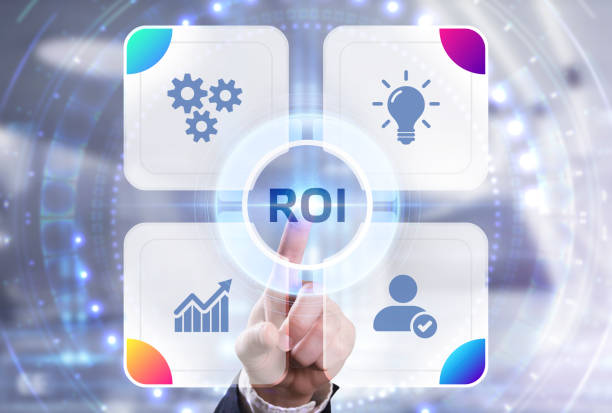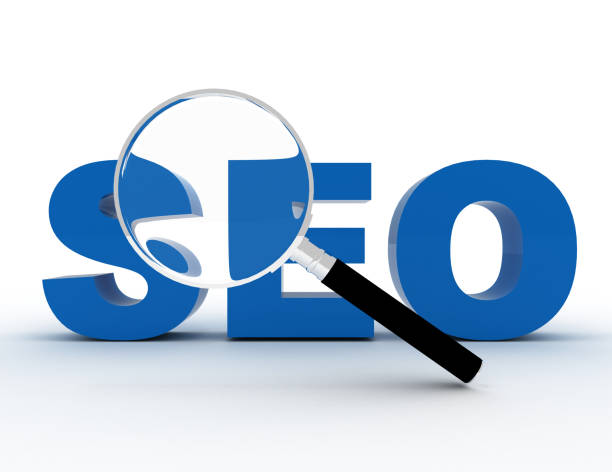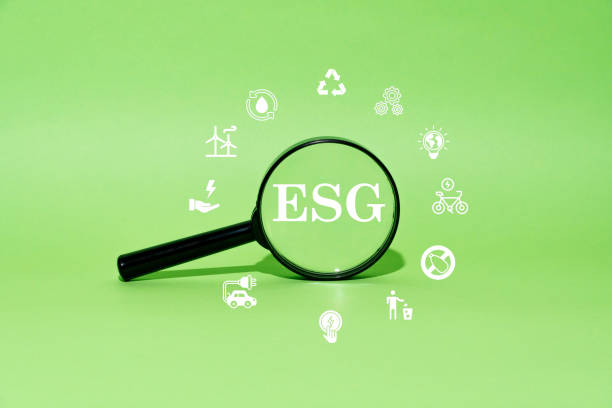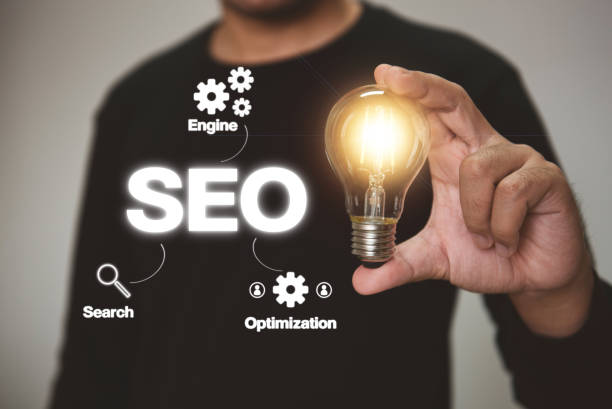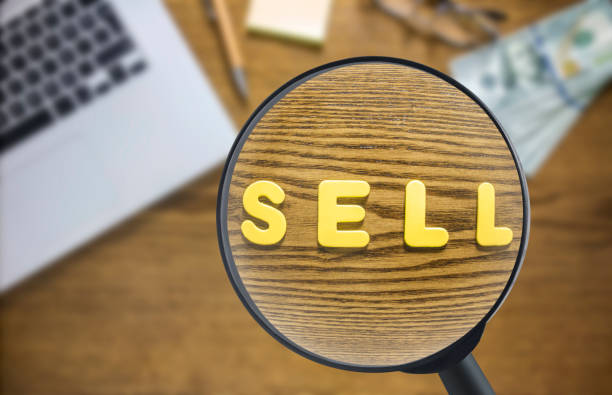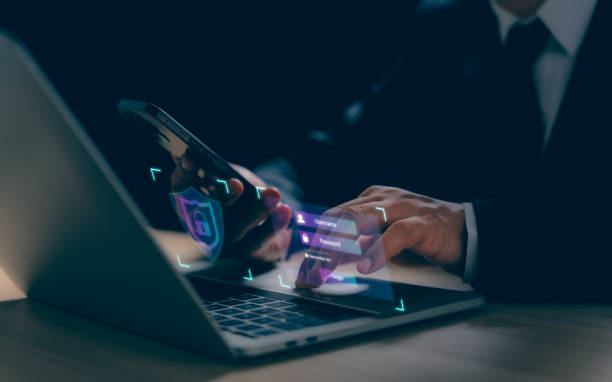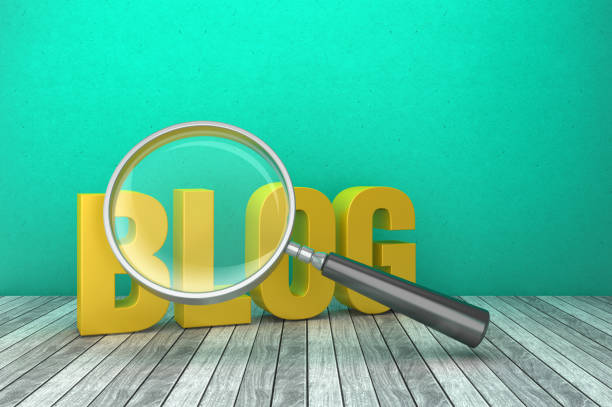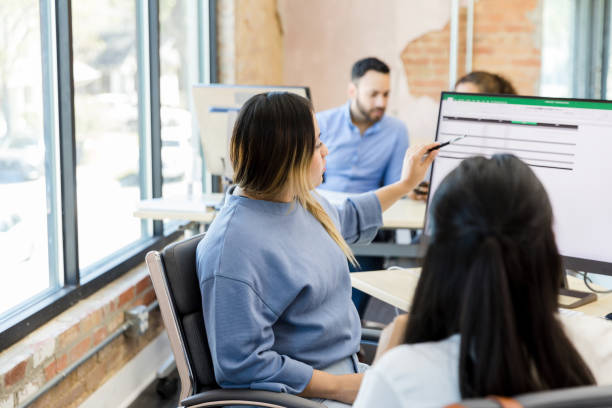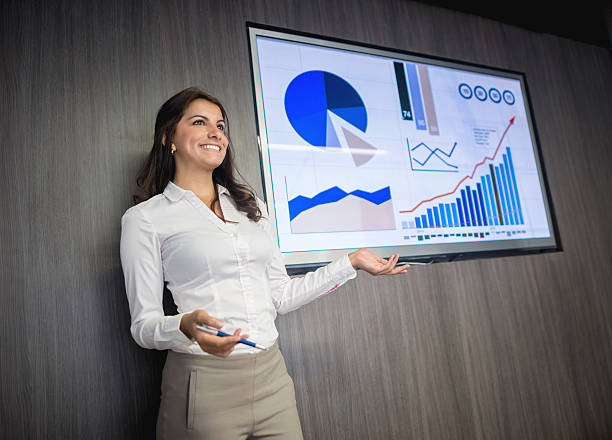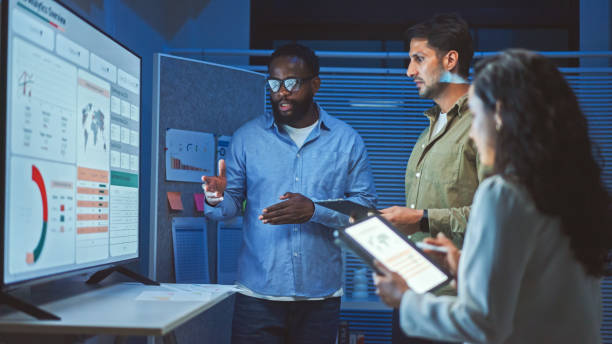What is On-Page SEO and Why Does it Matter?
On-Page SEO refers to the set of actions you take within your website to improve your site’s ranking in search engines like Google.
These actions include optimizing content, site structure, HTML tags, and other SEO-related elements.
The importance of On-Page SEO lies in the fact that it helps search engines better understand your website’s content and present it to users who are looking for related information.
A website with strong On-Page SEO is more likely to rank higher in search results and attract more organic traffic.
In fact, On-Page SEO is one of the main foundations of SEO, and without it, your efforts in other areas of SEO, such as link building, will not achieve the desired result.
Therefore, investing in On-Page SEO is a necessity for any website that wants to be successful in the online world.
More information about SEO is available on Wikipedia.
In addition, On-Page SEO also helps improve the user experience (UX).
A website with an organized structure and quality content is more attractive to users, and they are more likely to spend more time on your site and visit other pages.
On-Page SEO helps you take actions to improve your #site_ranking in search engines.
Is your current online store design causing you to lose customers and sales?
Rasaweb is your solution with modern and user-friendly online store designs!
✅ Significant increase in conversion rates and sales
✅ Creating strong branding and gaining customer trust
⚡ Get a free consultation on online store design from Rasaweb!
Keyword Research for On-Page SEO
Keyword research is one of the most important steps in On-Page SEO.
The purpose of this research is to identify the words and phrases that users use to search for information related to your business.
By identifying these keywords, you can optimize your content based on them and increase the likelihood of your site being seen in search results.
There are various tools for keyword research, including Google Keyword Planner, Ahrefs, Semrush, and Moz Keyword Explorer.
These tools help you get search volume, competition level, and other information related to various keywords.
When choosing keywords, you should pay attention to two important points.
First, the keywords should be relevant to your business, and second, they should have a suitable search volume.
Choosing keywords with very low search volume will not attract much traffic to your site, and choosing keywords with very high competition will make it difficult to rank in search results.
After identifying the right keywords, you should use them in your content.
But be aware that excessive use of keywords (Keyword Stuffing) can negatively impact your site’s SEO.
It is better to use keywords naturally and in relevant texts.
Using the right keywords in #On-Page_SEO can be very effective.
Optimizing Title and Meta Descriptions
The title and meta description are two important elements in On-Page SEO that are displayed to users in search results.
The page title is the main title that appears at the top of the search result, and the meta description is a short summary of the page’s content that appears below the title.
Optimizing the title and meta description is important because it helps users understand what your page is about and whether it meets their needs.
An attractive and relevant title and meta description increases the likelihood that users will click on your search result, and as a result, more traffic will be attracted to your site.
To optimize the page title, you should try to use your main keywords in the title.
Also, the title should be attractive and catchy and show users that your page contains valuable information.
The length of the title should also be between 50 and 60 characters so that it is fully displayed in search results.
Click here to preview your posts with PRO themes ››
To optimize the meta description, you should provide a short and attractive summary of your page’s content.
The meta description should also include your main keywords and give users a reason to click on your search result.
The length of the meta description should also be between 150 and 160 characters.
The impact of optimizing the title and meta description in #website_SEO is very important.
| Element | Description | Best Practices |
|---|---|---|
| Page Title | The main title of the page that is displayed in search results. | Includes keywords, attractive and catchy, length 50-60 characters. |
| Meta Description | A short summary of the page’s content that is displayed below the title. | Includes keywords, attractive and provides a reason to click, length 150-160 characters. |
Content Optimization for SEO
Content is the king of SEO.
High-quality, valuable, and relevant content is not only attractive to users, but also helps search engines better understand your site and assign it a higher ranking.
To optimize content for SEO, you should pay attention to a few important points.
First, the content must be unique and original.
Copying content from other websites will negatively impact your site’s SEO.
Second, the content must be relevant to your keywords and answer users’ questions and needs.
Third, the content must be readable and understandable and have a suitable structure.
To create SEO-friendly content, you can use appropriate titles and subtitles, short and readable paragraphs, relevant images and videos, and internal and external links.
Internal links help users and search engines discover different pages of your site, and external links to reputable and relevant sites increase the credibility of your site.
Content optimization for SEO increases your #website_visits.
Does your current corporate website reflect your brand’s credibility and power as it should? Rasaweb solves this challenge for you with professional corporate website design.
✅ Increase credibility and trust of visitors
✅ Attract targeted customers and more
⚡ Click to get a free consultation!
Image Optimization
Images play an important role in the attractiveness and efficiency of a website.
However, if images are not properly optimized, they can negatively impact the site’s loading speed and SEO.
To optimize images, you should pay attention to a few important points.
First, the images should have a suitable size.
High-volume images reduce the site’s loading speed, and this can lead to a decrease in your site’s ranking in search results.
To reduce the size of images, you can use image compression tools.
Second, the images should have a suitable file name.
The file name of the images should be related to the content of the image and include your keywords.
Third, the images should have Alt Text.
Alt Text is text that is displayed to users if the image does not load.
Alt Text should also be related to the content of the image and include your keywords.
By following these tips, you can optimize your images in a way that both increases the attractiveness of your site and helps improve its SEO.
Image optimization in #image_SEO increases the site’s loading speed and optimizes your site.
URL Structure Optimization
URL structure is another important factor in On-Page SEO.
An organized and logical URL structure helps users and search engines easily find the different pages of your site and understand what each page is about.
To optimize the URL structure, you should try to keep your URLs short, readable, and relevant to the page’s content.
Avoid using capital letters, special characters, and random numbers in URLs.
Also, try to use your main keywords in URLs.
For example, a suitable URL for a page about “SEO Training” could look like this: example.com/seo-training.
An inappropriate URL structure might look like this: example.com/page?id=123&category=456.
A suitable URL structure greatly helps your site’s #address_SEO.
Improving Site Loading Speed
Site loading speed is an important factor in user experience and SEO.
A website with a high loading speed is more attractive to users, and they are more likely to spend more time on your site and visit other pages.
Also, Google gives a better ranking to websites that have a high loading speed.
Click here to preview your posts with PRO themes ››
To improve site loading speed, you can use various methods, including image optimization, using a CDN, enabling caching, reducing code size, and using strong hosting.
There are various tools for testing site loading speed, including Google PageSpeed Insights, GTmetrix, and Pingdom Website Speed Test.
These tools help you identify the speed problems of your site and find solutions to fix them.
Optimize your site for SEO by increasing your #website_loading_speed.
| Method | Description |
|---|---|
| Image Optimization | Reduce the size and dimensions of images. |
| Using a CDN | Using a content distribution network to load resources faster. |
| Enabling Caching | Temporarily store data for faster access. |
| Reducing Code Size | Compress CSS and JavaScript files. |
| Using Strong Hosting | Choosing a hosting provider with high performance. |
Mobile Optimization
Today, most internet users access websites through mobile devices.
Therefore, optimizing a website for mobile is a necessity for any website that wants to be successful in the online world.
Mobile optimization includes responsive design, high mobile loading speed, and a user interface suitable for touch devices.
Google also gives a better ranking to websites that are optimized for mobile.
Therefore, by optimizing your website for mobile, you can improve your site’s ranking in search results and attract more traffic from mobile users.
Optimizing #mobile_website is very important in SEO.
#On-Page SEO is very important in optimizing a site for search engines.
Does your current website convert visitors into customers or drive them away? Solve this problem forever with professional corporate website design by Rasaweb!
✅ Create credibility and powerful branding
✅ Attract target customers and increase sales
⚡ Get a free consultation now!
Using Schema Markup
Schema Markup is code that you can add to your website’s pages to help search engines better understand your page’s content.
Schema Markup provides search engines with accurate information about the type of content (such as article, product, event, etc.) and helps them display richer search results to users.
Using Schema Markup can increase your site’s click-through rate (CTR) in search results and attract more traffic to your site.
Also, using Schema Markup can help improve your site’s SEO.
Using Schema Markup can greatly help your #site_SEO.
#On-Page SEO is very important in optimizing a site for search engines.
Monitoring and Measuring Results
After taking On-Page SEO actions, you should monitor and measure your results to see if your efforts have achieved the desired result.
To monitor and measure results, you can use various tools, including Google Analytics and Google Search Console.
Google Analytics helps you track your site’s traffic, analyze user behavior on your site, and measure your conversion rate.
Google Search Console helps you monitor your site’s performance in search results, identify SEO problems on your site, and submit your site map to Google.
By monitoring and measuring results, you can identify the strengths and weaknesses of your SEO strategy and take the necessary actions to improve it.
Monitoring and measuring results helps us reach high rankings in Google with #content_SEO.
#On-Page SEO is very important in optimizing a site for search engines.
Frequently Asked Questions
| Row | Question | Answer |
|---|---|---|
| 1 | What is On-Page SEO? | On-Page SEO refers to the set of actions that are performed within the website (on its pages) to improve the site’s ranking in search engine results. This includes optimizing content, site structure, and HTML codes. |
| 2 | Why is On-Page SEO important? | On-Page SEO helps search engines better understand the content of the page and determine whether that page is relevant and valuable to users’ searches. This better understanding leads to a higher ranking. |
| 3 | What is the first and most important step in On-Page SEO? | Keyword Research is the most important first step. By finding the right keywords, you can produce targeted content that is relevant to users’ needs. |
| 4 | What is the role of the Title Tag in On-Page SEO? | The title tag is one of the most important ranking factors and must include the main keyword. This tag is displayed in search results as the page title and affects the click-through rate (CTR). |
| 5 | What is the importance of the Meta Description? | The meta description does not directly affect ranking, but by providing an attractive summary of the page’s content in search results, it can encourage users to click and thus increase the click-through rate (CTR). |
| 6 | Why is the use of Headings (H1, H2, etc.) important in content? | Headings help to structure content and improve readability for users and search engine crawlers. Using keywords in headings also helps the search engine better understand the topic. |
| 7 | What does Image Optimization in On-Page SEO include? | Includes compressing images to reduce size, using descriptive and related file names, and filling in the Alt tag (alternative text) with related keywords to help search engines understand the content of the image. |
| 8 | What is meant by Internal Linking in On-Page SEO? | Internal linking refers to creating links between different pages of a website. This helps to spread page authority (Link Equity), improve user experience, and help search engine crawlers discover new pages. |
| 9 | Why is Page Speed important for On-Page SEO? | Page loading speed is a direct ranking factor and greatly affects the user experience. Slow pages can increase the bounce rate and reduce user engagement. |
| 10 | What role does quality content play in On-Page SEO? | Quality content that is comprehensive, unique, and valuable to the user is the core of On-Page SEO. This content not only attracts and retains users, but also sends positive signals to search engines and helps to improve ranking. |
Click here to preview your posts with PRO themes ››
And other advertising services of Rasa Web Advertising Agency
Intelligent Advertising Campaign: Professional optimization for user engagement using precise audience targeting.
Intelligent Direct Marketing: A dedicated service to grow user engagement based on optimizing key pages.
Intelligent Digital Advertising: A fast and efficient solution for managing campaigns with a focus on marketing automation.
Intelligent Marketplace: An effective tool for managing campaigns with the help of dedicated programming.
Intelligent Direct Marketing: Transform click-through rates with the help of attractive user interface design.
And over a hundred other services in the field of internet advertising, advertising consulting, and organizational solutions
Internet Advertising | Advertising Strategy | Advertorials
Resources
On-Page Optimization in Moz
,Semrush On-Page SEO Guide
,On-Page SEO: Ahrefs Complete Guide
,On-Page SEO in Search Engine Land
Are you ready to transform your business in the digital space? Rasaweb Afarin Digital Marketing Agency, by providing comprehensive and specialized services, is your guide on the path to online success. With years of experience, we help businesses have a strong and effective presence in the digital world.
From search engine optimization (SEO) and content marketing strategies to responsive website design and the implementation of targeted advertising campaigns, we cover all your digital needs. Our goal is to increase your visibility, attract more customers, and ultimately achieve sustainable growth for your business.
By trusting the expertise of the Rasaweb Afarin team, you can confidently entrust the digital future of your business to us. We are committed to achieving the best results for you and ensuring that your brand shines in today’s competitive landscape. With Rasaweb Afarin, take a firm step towards great success.
📍 Tehran, Mirdamad Street, next to the Central Bank, South Kazerun Alley, Ramin Alley, No. 6
“`


